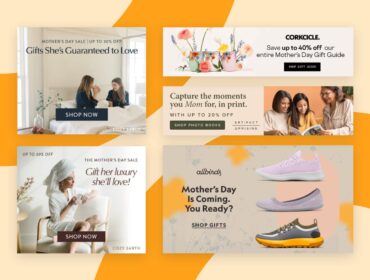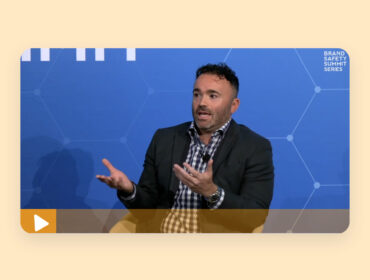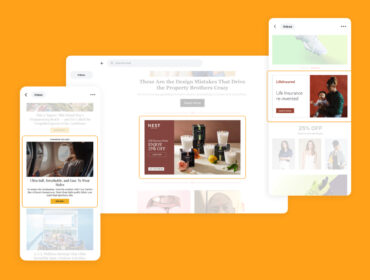Brand awareness: A marketer’s guide
Brand awareness should be a top priority for marketers. Yes, it’s tempting to focus on performance campaigns that drive conversions and revenue. But it’s important to remember that brand awareness campaigns can help you build your pipeline for the future. With brand awareness you can nurture audience relationships on a long-term basis and move customers down the funnel.
In fact, the need to drive brand awareness has never been greater, as Nielsen reports. In the face of the pandemic and economic instability, consumers are shifting their loyalties and switching brands. Instead of just prioritizing price and quality, they’re also considering brand values and customer-centric services.
This all means that marketers have a big opportunity to get in front of new audiences with widespread, multi-channel messaging. And they can do that with brand awareness campaigns.
That’s part of why marketers across the globe say building brand awareness is their top marketing objective this year. B2C marketers also say brand awareness is the top goal that content marketing helps them achieve.
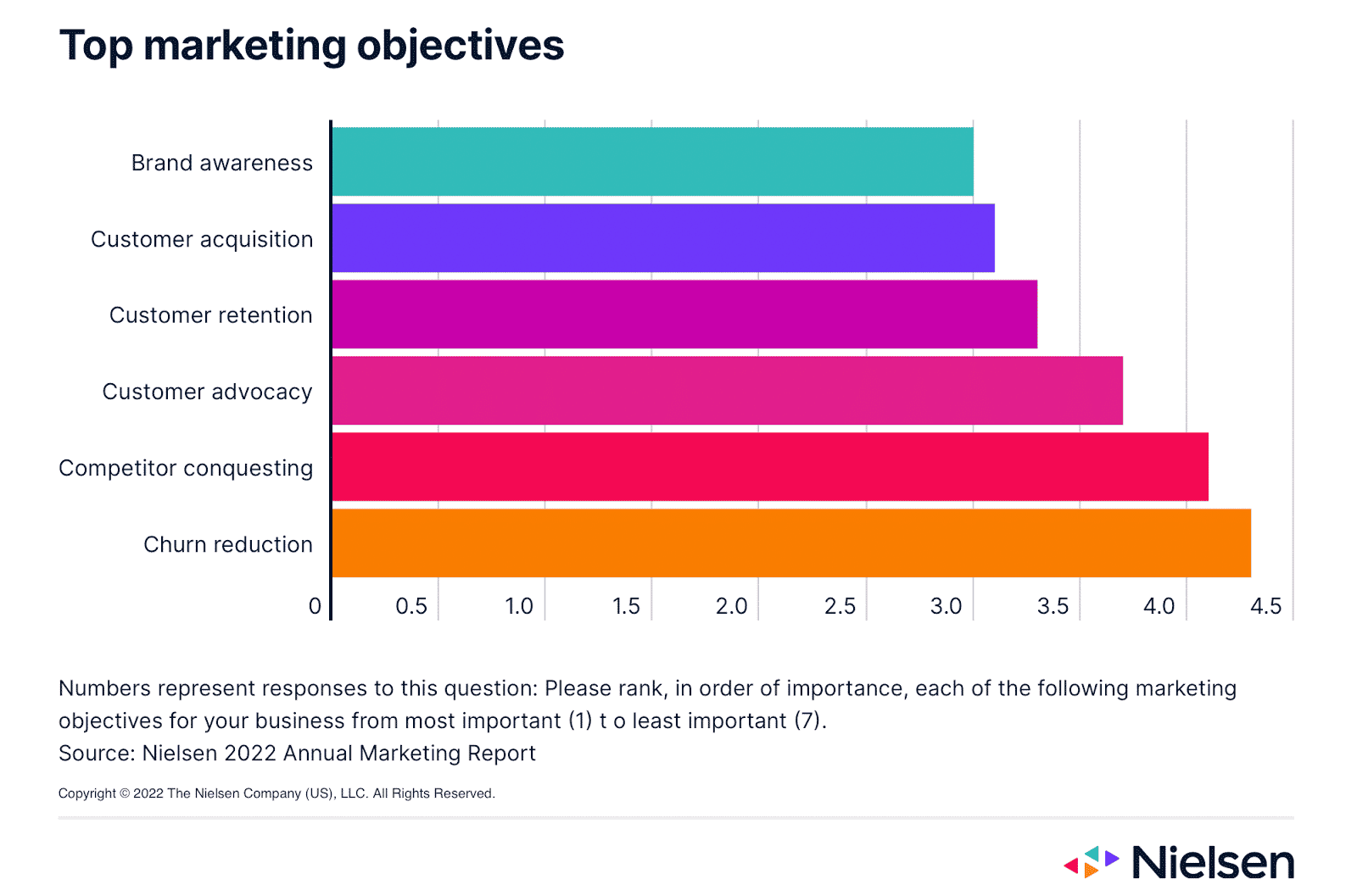
Still, brand awareness isn’t just about casting a wide net and hoping your message sticks. With so many platforms to choose from and a wealth of data at their fingertips, marketers have to make sure they’re developing the right brand awareness strategies for their goals and customers.
That’s where this ultimate guide to brand awareness comes in. Here, we’ll cover:
- What is brand awareness?
- Why is brand awareness important?
- How to build brand awareness
- Measuring brand awareness
- Examples of brand awareness campaigns
Let’s get started.
What is brand awareness?
Brand awareness refers to how familiar customers are with your brand and products. More specifically, how many people can recognize and recall your brand’s image, products, and messaging — and to what extent.
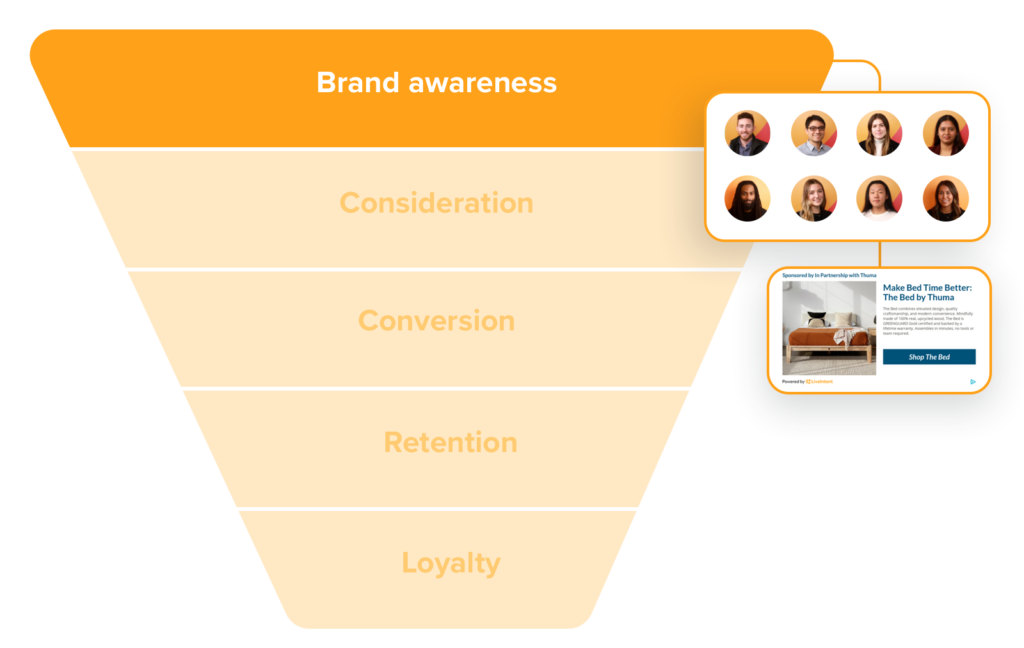
Brand awareness is considered the first stage in the marketing funnel, followed by consideration, conversion, retention, and loyalty. With brand awareness campaigns businesses can make the most of their budgets and resources. For instance, brand awareness helps businesses reach a wide audience of potential customers. Brands can then launch more targeted and personalized campaigns to reach interested parties or deliver campaigns that keep them top of mind for future consideration.
Why is brand awareness important?
Brand awareness is an essential part of any marketing strategy. It can help increase website traffic and get your products in front of the masses — but it can also do so much more. Let’s explore those possibilities.
Build a pipeline of customers for the future
Many brands — direct-to-consumer (D2C) brands in particular — have invested heavily in performance marketing. And why wouldn’t they? Performance marketing helps businesses to quickly generate revenue and drive impact on their bottom lines. While this approach is understandable, focusing too heavily on one channel, platform, or a small audience segment can hinder business growth.
After all, what happens once you’ve targeted everyone on Facebook aged 18-35, for example? You’ve saturated the channel, which will only make your cost-per-acquisition (CPA) increase. So, where do you go from there? You go back to your media plan and diversify. By leveraging brand awareness strategies across various channels and platforms, you expand your reach and create a pipeline of future customers.
Building this pipeline can be particularly helpful if you’re looking to introduce your brand to a new market, launching an entirely new line of business that meets different needs and pain points, or selling a product with a lengthy or complex path to purchase.
Differentiate from the competition and remain top-of-mind
Brands like Coca-Cola, Starbucks, and Tylenol are instantly recognizable to millions of customers. This is because they’ve mastered the process of building brand awareness and increasing their brand equity. By launching widespread awareness campaigns, they’ve been able to edge out the competition, dominate their markets, and remain top-of-mind among global audiences.
Communicate your brand mission and values
Brand awareness campaigns are great vehicles for not just promoting products, but pulling back the curtain on your brand and sharing the deeper purpose behind your products and services.
Customers care more than ever about the “why” and “how” behind the brands they buy from. Why are you manufacturing and selling these products? How are you promoting wellness and sustainability? How and why are you running programs that give back to communities in need? You can communicate these points with strategic brand awareness campaigns.
Ninety-four precent of global consumers say it’s important for the companies they engage with to have a strong purpose. And when consumers think a brand has a strong purpose, they are:
- 4X more likely to buy
- 4.5X more likely to recommend them to friends and family
- 6X more likely to stand up for the company in the event of a PR mishap
Gather valuable audience data
Brand awareness campaigns can yield a wealth of valuable data that you can then use to fuel performance and retargeting campaigns. Especially if you launch these campaigns across channels, you can gather a rich and varied data set to better understand who your target customers are, where they’re active, and how to engage them.
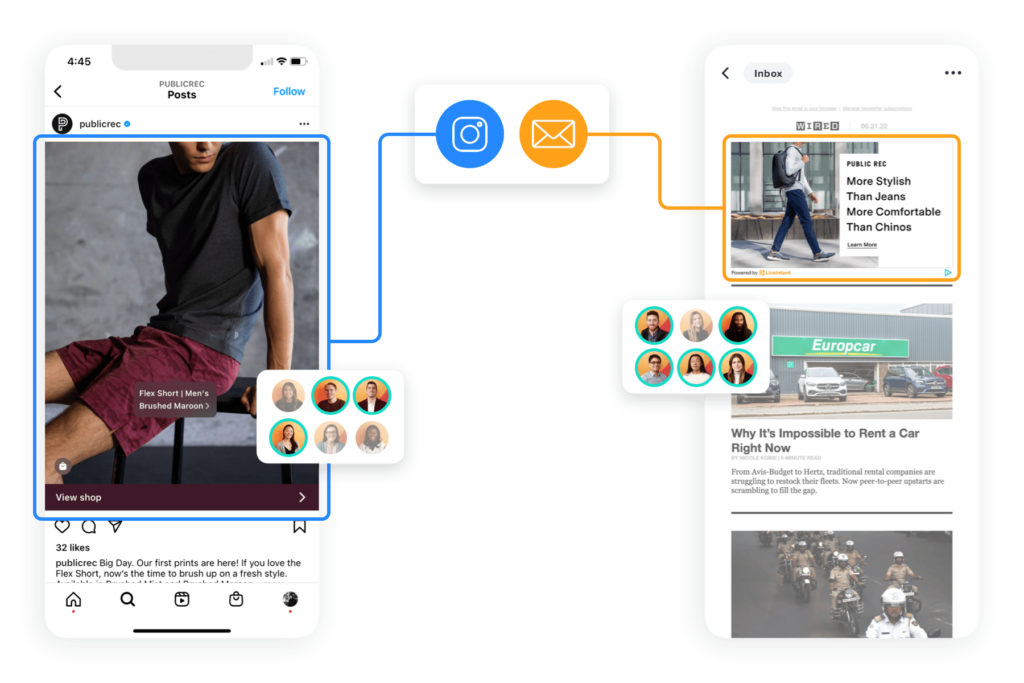
Email, for example, is home to one of the most valuable pieces of first-party data: the email address. With email addresses at your fingertips, you can improve identity and addressability, and track and target your customers in privacy-safe ways. Building this first-party data footprint will be particularly important as marketers revamp their strategies for a cookieless world.
Generate sales
Because brand awareness is the first stage of the marketing funnel it is also one the most significant. Just like breakfast gets you fueled up and ready for a productive day, brand awareness sets up your business for a successful marketing strategy, so you can drive sales and conversions.
After all, customers are more likely to buy from brands they’re already familiar with than those they aren’t. Just look at the data: 82% of search engine users click on a brand they’re familiar with first — regardless of where that brand shows up on the search results page; 90% of people buy from brands they already follow on social media; and a whopping 85% of Gen Z shoppers prefer buying from familiar brands, while almost 70% said they find “comfort in the familiar.” So, yes, brand awareness does pay off.
How to build brand awareness
Brand awareness campaigns come in many forms — from native email ads and paid search results to sponsored social media posts and livestream events.
Overall, however, there are several key strategies to keep in mind when building brand awareness and creating the most effective campaigns possible.
Take a full-funnel approach to marketing
Remember that brand marketing and performance marketing are just two pieces of a larger puzzle. For a truly sustainable marketing operation, you need to think about the whole funnel and customer journey — from the moment audiences first discover your brand until they become loyal advocates for what you have to offer, and beyond.
That is to say, it’s important to build brand awareness campaigns that will get people in the funnel and then use more targeted campaigns to keep them moving on the path to purchase.
You can launch native ads in email newsletters, for example, to reach audiences in nonintrusive ways. Once someone clicks on the native ad, they’ll be taken to a landing page where with more information about your brand values and services. You can then reach these users again with more promotional ads, keeping them engaged and coming back for more.
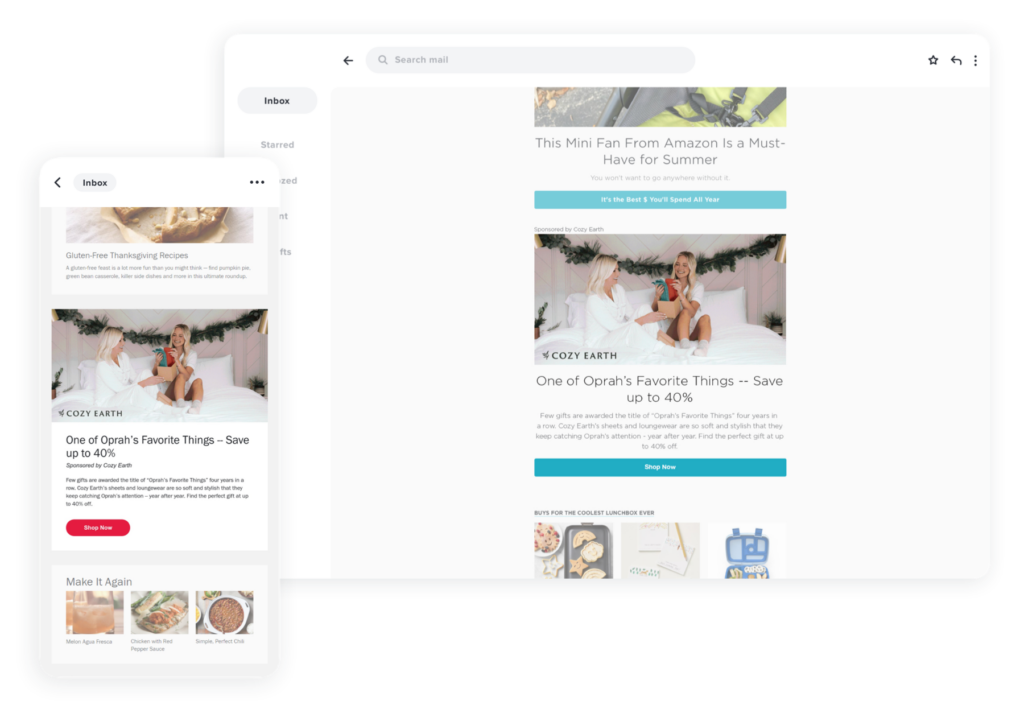
LiveIntent, for instance, uses Native Curated Packages to automate and customize native ads in email newsletters. We also help you track website visitors with our LiveConnect technology, so you can easily retarget them with display ads in a performance marketing campaign.
Leverage omnichannel strategies
By focusing on just one or two distribution channels, you risk missing opportunities to reach new audiences and build brand awareness. That’s why it’s important to diversify your marketing mix and leverage omnichannel strategies.
So if you’ve already built a steady blog readership through search engine optimization (SEO), try starting a branded podcast. Or if you’ve already maxed out your reach on Facebook and Instagram, try investing in email.
In fact, email is one of the most powerful brand awareness tools out there. As an opt-in, direct-to-consumer channel, it’s the perfect place to reach real people who are interested in what you have to say. It’s also been around for decades and still going strong: Adobe reported that Americans spend almost 5 hours a day on email. And, unlike many social media platforms, email isn’t overcrowded. Once someone opens an email, they’re one-on-one with that content — not lost in an infinite scroll of posts from family, friends, bosses, coworkers, and your own competitors.
Create and distribute custom content
Along with creating unique and eye-catching ads, you’ll want to build landing pages that support your brand awareness campaigns. When designing your landing page, you might want to include key elements such as:
- Messaging that’s consistent with your ads, resulting in a consistent and intuitive user experience
- Simple but engaging copy about your brand values, mission, and purpose
- Original images or videos that help tell your brand story and convey your company’s personality
- Testimonials and reviews from satisfied customers
- FAQs and answers, putting everything potential customers might need to know in one place
- An easy-to-use navigation bar for clicking to other pages and products on your site
- A click-worthy and straightforward call-to-action that matches your goal, like “Sign up now,” “Download to learn more,” or “Start your free trial”
Build valuable partnerships
You don’t have to generate brand awareness alone. With the right partners, you can automate, customize, track, and optimize your brand awareness campaigns with ease.
In fact, that’s exactly how LiveIntent can help. If you’re ready to move beyond the Facebook-Google duopoly and diversify your marketing mix, we have the tools you need. With LiveIntent you can tap into one of the most powerful and unique advertising channels on the web: email.
LiveIntent will programmatically distribute your ads within our network of over 2,000 premium, brand-safe publishers. So you can tap into a logged-in audience of over 200 million active and engaged newsletter readers. We’ll also help you customize creative to tell your brand story through a variety of ad sizes and formats — from native ads to dynamic product ads to display ads.
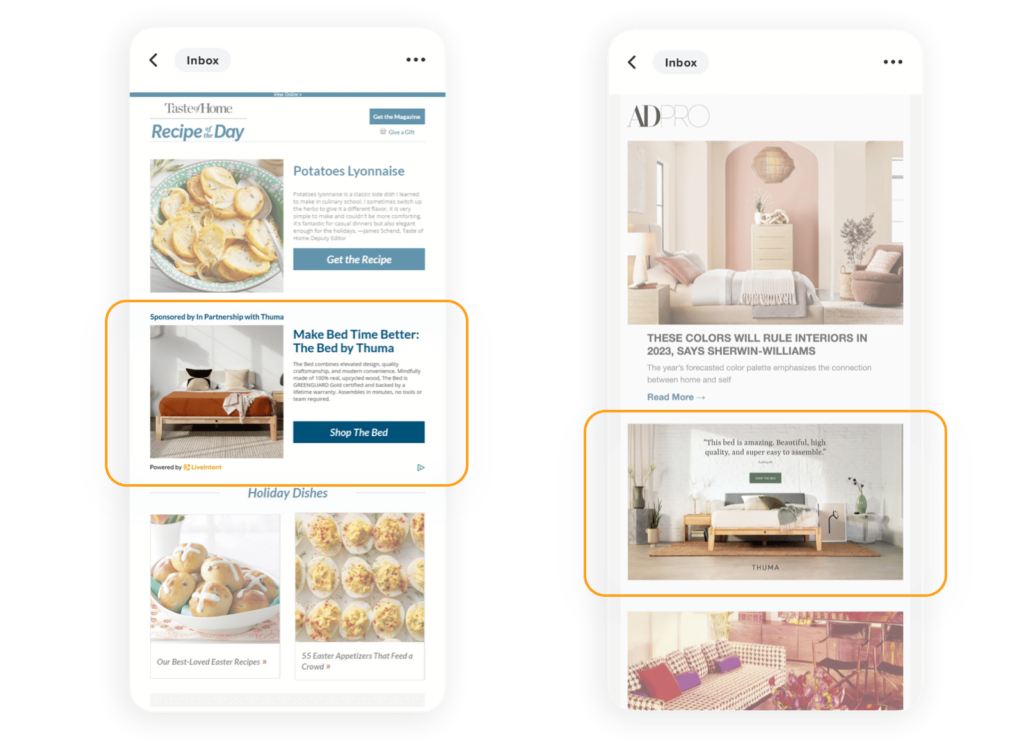
And don’t worry about those pesky third-party cookies. Our platform runsis built to run on first-party data, so you can start by driving brand awareness and keep launching campaigns that deliver full-funnel results.
Measuring brand awareness
There are many ways to measure brand awareness, depending on your campaign goals and distribution channels.
If you want to generate brand awareness through native email ads, for instance, you might track metrics like impressions, clickthrough rates, and website pageviews. Or if you want to increase brand awareness on social media, you might track impressions, likes, and follows.
It’s important to understand the brand awareness metrics available to you, so you can make the best choice for your campaigns.
Common brand awareness metrics
- Impression: How many times your ads were shown to people
- Views: How many times people saw your ads
- Clickthrough rate: The number of people who clicked on your ad divided by the total number of impressions it received
- Completion rate: For video ads, this measures the number of people who watched your whole video divided by the number of people who were shown your video
- Pageviews: The number of pages that were viewed on your website as a result of people clicking on your ad
- Unique visitors: The total number of people who visited your website after clicking on your ad
- Social media engagements: Depending on the social platform, these metrics might include organic reach, paid reach, impressions, likes, comments, clicks, shares, follows, and mentions
- Search volume data: The amount of times people search for your brand, products, or services on search engines like Google
- Brand recall: How many people can remember and recall your brand after being exposed to a brand awareness campaign
- Survey results: Direct feedback from customers about whether they’ve heard of your brand, how well they know your brand, and what they associate with your brand image and messaging
With the right mixture of these qualitative and quantitative brand awareness metrics, you can better understand campaigns performance and identify optimization opportunities.
Examples of brand awareness campaigns
Brand awareness campaigns come in many shapes and sizes. It can be tough to find the strategies that work best for your needs.
To help, we’ll share some inspiration from these successful brand awareness campaign case studies.
La Quinta increased brand awareness by 4.7%
La Quinta Inn & Suites wanted to increase brand awareness and boost brand perception among its target audience of male business travelers. The company teamed up with LiveIntent to find email newsletters that their target audience was already consuming. Together they found verticals like news, business, and travel to be of interest. Armed with this insight LiveIntent helped La Quinta launch email ads in those newsletter verticals to reach their target audiences.
As a result of this brand awareness campaign, La Quinta expanded its unique reach and increased brand awareness by 4.7%.
Reader’s Digest sees 20% lift in clicks with brand awareness campaign
Reader’s Digest, which celebrated its 100th anniversary in 2022, wanted to grow the digital audience for its Taste of Home magazine. While the food publication’s print audience was large, Reader’s Digest needed to scale its online reach and get in front of foodies everywhere.
The publisher partnered with LiveIntent to target audiences with brand awareness campaigns across culinary-related newsletters from publishers like Better Homes & Gardens and Martha Stewart’s Living. The result? Reader’s Digest saw a 20% lift in clicks, 70% lower eCPA, and even 117% lift in conversions.
Launch your own brand awareness campaigns
Now that you have the tools to guide you, you can start building or improving your own brand awareness campaigns. With shifting customer behaviors, it’s more important than ever to grab the attention of new audiences and build your pipeline. By launching robust, data-backed brand awareness campaigns across channels, you can prepare your business for the future and build even better performance campaigns to help you meet your bottom line.
